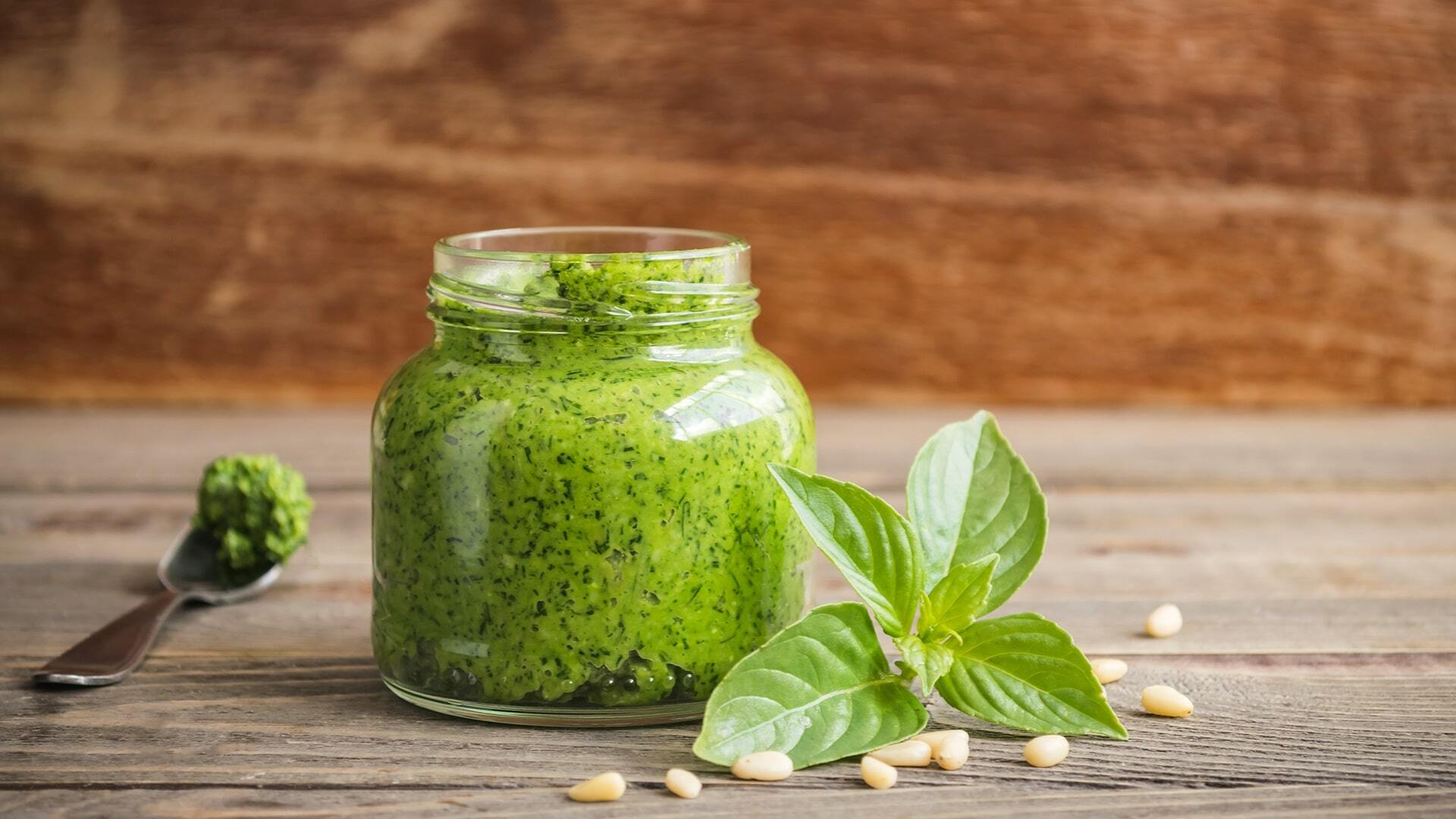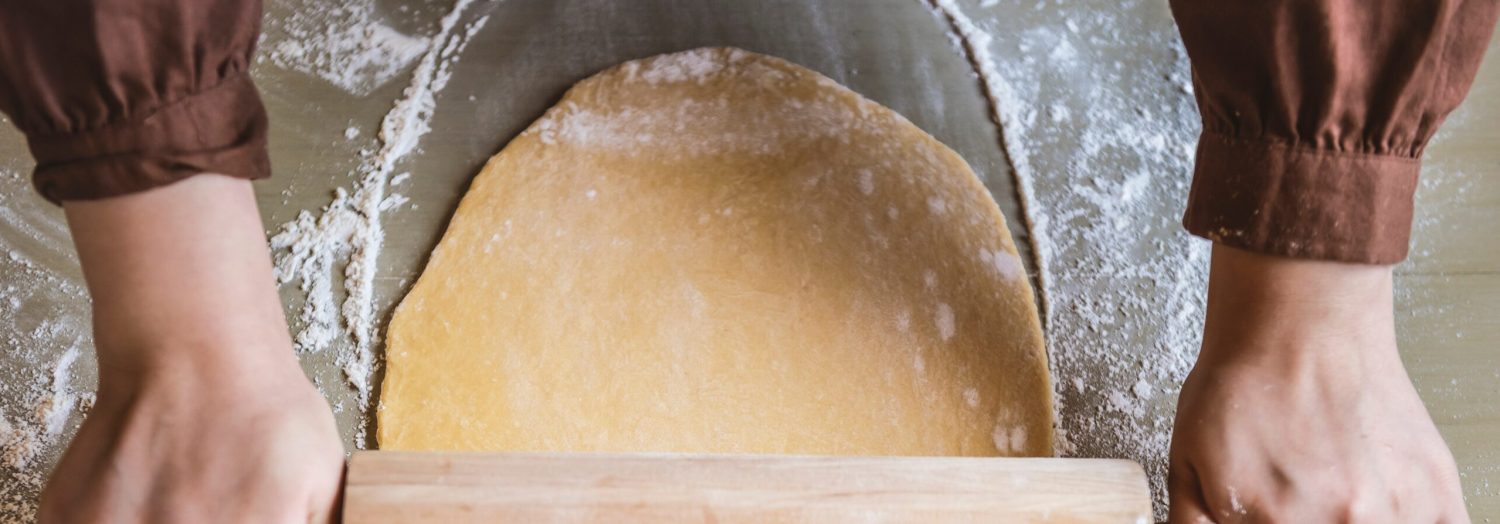This pesto sauce recipe is a vibrant and flavorful addition to any dish. With its rich blend of basil, parmesan cheese, and pine nuts, it brings a burst of freshness and a touch of sophistication to your meals. Perfect for pasta, sandwiches, or as a dip, this sauce is both versatile and delicious.
Some ingredients in this recipe might not be commonly found in every household. Pine nuts are a key component of traditional pesto but can be pricey and sometimes hard to find. Fresh basil leaves are essential for the authentic flavor, so make sure to pick up a bunch from the produce section. High-quality extra virgin olive oil is also crucial for the best taste.

Ingredients For Pesto Sauce Recipe
Basil leaves: Fresh and aromatic, these leaves are the heart of the pesto, providing a vibrant green color and a distinct flavor.
Parmesan cheese: Adds a rich, nutty taste and creamy texture to the sauce.
Extra virgin olive oil: A high-quality oil that binds the ingredients together and adds a smooth, fruity flavor.
Pine nuts: These nuts contribute a subtle, buttery taste and a bit of texture to the pesto.
Garlic: Provides a pungent, savory depth that enhances the overall flavor.
Salt: Balances and enhances the flavors of the other ingredients.
Black pepper: Adds a mild heat and a touch of complexity to the sauce.
Technique Tip for This Recipe
Toasting the pine nuts before adding them to the food processor can enhance the flavor of your pesto sauce. Simply place the pine nuts in a dry skillet over medium heat and stir frequently until they are golden brown and fragrant. Be careful not to burn them, as they can go from perfectly toasted to burnt very quickly. This extra step will add a rich, nutty depth to your pesto.
Suggested Side Dishes
Alternative Ingredients
fresh basil leaves - Substitute with spinach leaves: Spinach provides a similar texture and a mild flavor that pairs well with the other ingredients.
fresh basil leaves - Substitute with arugula: Arugula adds a peppery bite that can make the pesto more interesting.
grated parmesan cheese - Substitute with pecorino romano: Pecorino Romano has a similar texture and a slightly saltier, sharper flavor.
grated parmesan cheese - Substitute with nutritional yeast: Nutritional yeast provides a cheesy flavor and is a great vegan alternative.
extra virgin olive oil - Substitute with avocado oil: Avocado oil has a mild flavor and similar healthy fats.
extra virgin olive oil - Substitute with grapeseed oil: Grapeseed oil is neutral in flavor and works well in emulsifying the sauce.
pine nuts - Substitute with walnuts: Walnuts have a similar texture and a slightly earthy flavor.
pine nuts - Substitute with almonds: Almonds provide a mild, nutty flavor and similar crunch.
minced garlic - Substitute with garlic powder: Garlic powder can provide a similar flavor, though it is less pungent.
minced garlic - Substitute with shallots: Shallots offer a milder, sweeter flavor that can complement the other ingredients.
salt - Substitute with soy sauce: Soy sauce can add a salty and umami flavor, though use sparingly to avoid overpowering the dish.
black pepper - Substitute with white pepper: White pepper provides a similar heat but with a slightly different flavor profile.
Other Alternative Recipes Similar to This
How to Store / Freeze This Recipe
- To keep your pesto sauce fresh and vibrant, transfer it to an airtight container. Ensure there's minimal air space to prevent oxidation.
- For an extra layer of protection, drizzle a thin layer of olive oil over the top before sealing the container. This helps to preserve the bright green color and fresh flavor of the basil.
- Store the container in the refrigerator. Your pesto sauce will stay fresh for up to a week.
- If you want to enjoy your pesto for a longer period, freezing is a great option. Spoon the sauce into an ice cube tray for convenient, single-use portions.
- Once frozen, pop the pesto cubes out of the tray and transfer them to a resealable plastic bag or another airtight container. This method allows you to grab just the right amount when needed.
- When you're ready to use the frozen pesto, simply take out the desired number of cubes and let them thaw in the refrigerator or at room temperature. You can also add them directly to hot pasta or soups for a quick infusion of flavor.
- For best results, use frozen pesto within 3-4 months to ensure optimal taste and quality.
How to Reheat Leftovers
Gently warm the pesto sauce on the stovetop over low heat. Stir continuously to prevent the olive oil from separating and to maintain the sauce's creamy texture. Avoid overheating as it can cause the basil leaves to lose their vibrant color and fresh flavor.
If using a microwave, transfer the pesto sauce to a microwave-safe bowl. Cover it loosely to prevent splatters. Heat in short bursts of 10-15 seconds, stirring in between to ensure even warming. This method helps maintain the integrity of the parmesan cheese and pine nuts.
For a more integrated approach, mix the pesto sauce with freshly cooked pasta or vegetables straight from the pot. The residual heat from the pasta or vegetables will gently warm the pesto without the risk of overheating.
Another method is to place the pesto sauce in a heatproof bowl and set it over a pot of simmering water, creating a double boiler effect. Stir occasionally until the pesto reaches the desired temperature. This gentle heating method helps preserve the fresh flavors of the basil and garlic.
If you have a sous-vide machine, place the pesto sauce in a vacuum-sealed bag and immerse it in a water bath set to a low temperature (around 120°F or 50°C). This method ensures even and gentle warming, preserving the pesto's vibrant color and fresh taste.
Best Tools for Making This Recipe
Food processor: Essential for blending the basil leaves, pine nuts, and garlic into a coarse mixture and then incorporating the parmesan cheese and olive oil smoothly.
Rubber spatula: Useful for scraping down the sides of the food processor to ensure all ingredients are evenly mixed.
Measuring cups: Necessary for accurately measuring the basil leaves, parmesan cheese, olive oil, and pine nuts.
Measuring spoons: Needed for measuring the salt and black pepper precisely.
Airtight container: Important for storing the pesto sauce in the refrigerator to keep it fresh.
Knife: Handy for mincing the garlic cloves before adding them to the food processor.
How to Save Time on This Recipe
Pre-measure ingredients: Measure out basil leaves, parmesan cheese, olive oil, pine nuts, and garlic before starting to streamline the process.
Use pre-minced garlic: Save time by using pre-minced garlic instead of mincing fresh cloves.
Toast pine nuts in bulk: Toast a large batch of pine nuts and store them for future use.
Batch process: Make a larger batch of pesto sauce and freeze portions for later use.
Food processor efficiency: Ensure your food processor is clean and ready to go before starting.

Pesto Sauce Recipe
Ingredients
Main Ingredients
- 2 cups Fresh Basil Leaves
- ½ cup Grated Parmesan Cheese
- ½ cup Extra Virgin Olive Oil
- ⅓ cup Pine Nuts
- 3 cloves Garlic minced
- ¼ teaspoon Salt
- ¼ teaspoon Black Pepper
Instructions
- Combine basil leaves, pine nuts, and garlic in a food processor and pulse until coarsely chopped.
- Add Parmesan cheese and pulse a few times more.
- Slowly add olive oil in a constant stream while the food processor is on. Stop to scrape down the sides with a rubber spatula.
- Add salt and pepper to taste.
- Store in an airtight container and refrigerate.
Nutritional Value
Keywords
More Amazing Recipes to Try 🙂
- Chicken Pesto Panini Recipe20 Minutes
- Dutch Babies Recipe30 Minutes
- Veggie Pizza Recipe35 Minutes
- No-Bake Energy Bites Recipe10 Minutes
- Birthday Cake Recipe1 Hours 5 Minutes
- Buttered Noodles Recipe15 Minutes
- Mint Juleps Recipe10 Minutes
- Mint Syrup Recipe15 Minutes


Leave a Reply